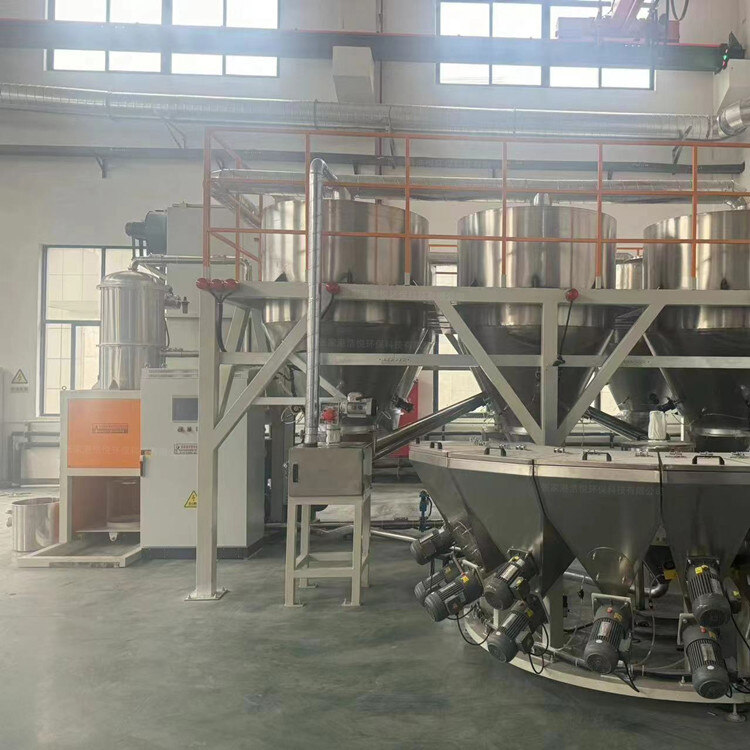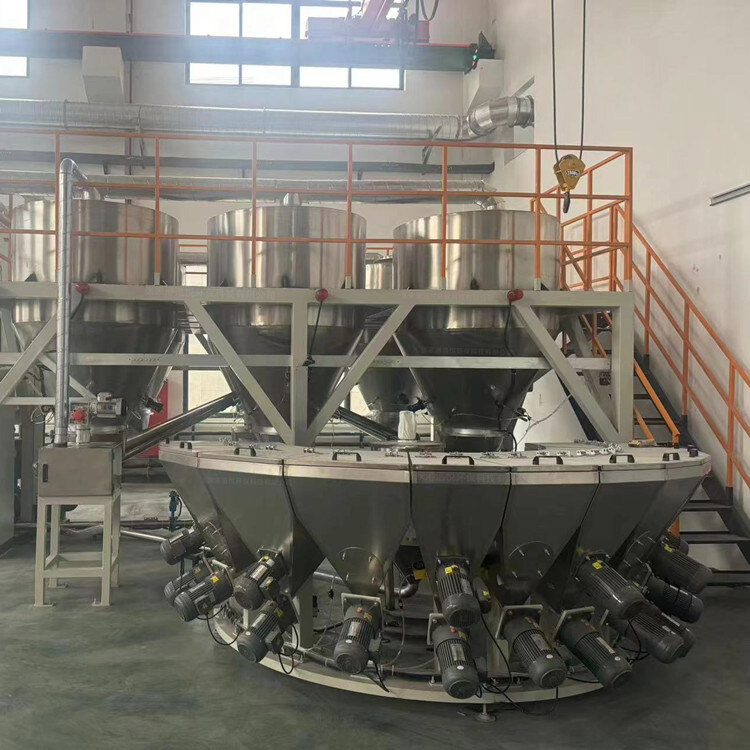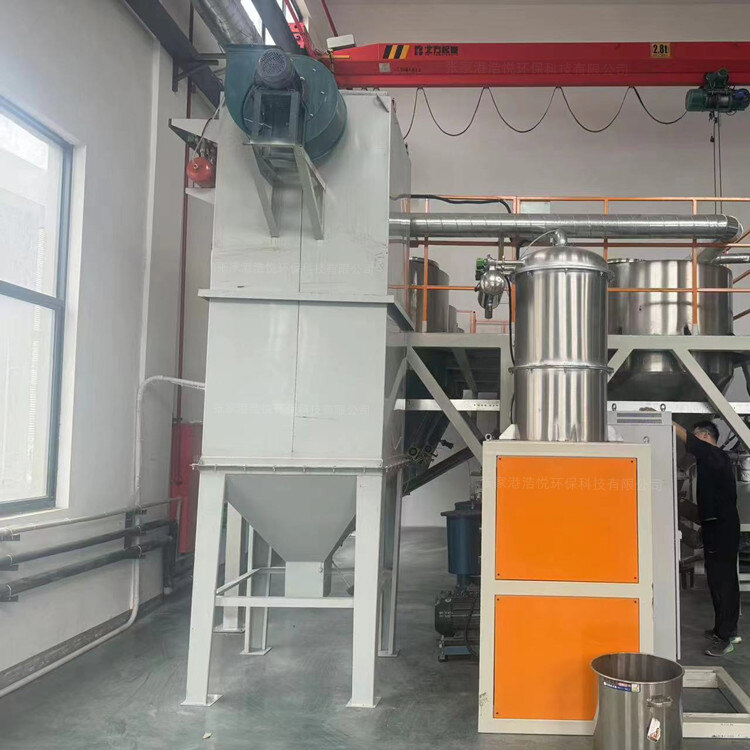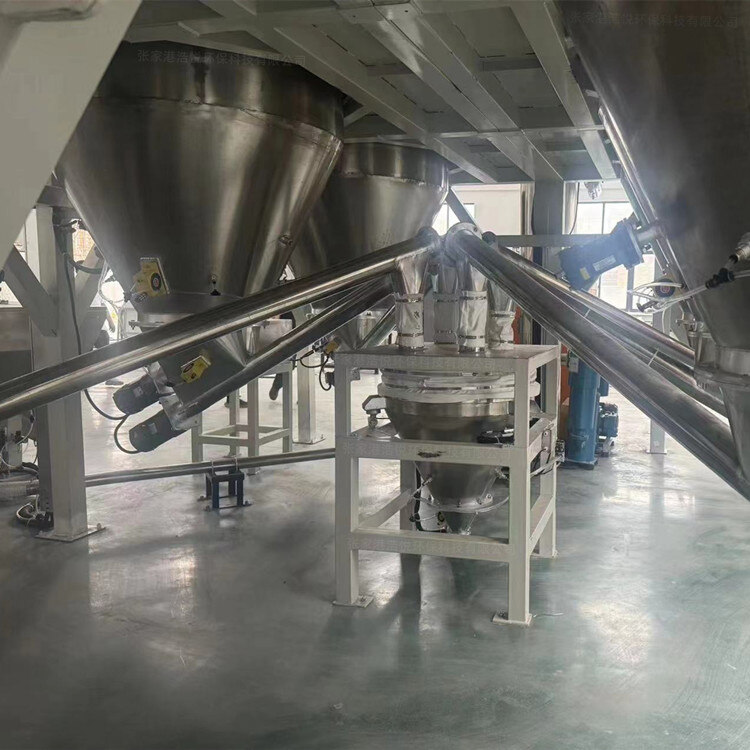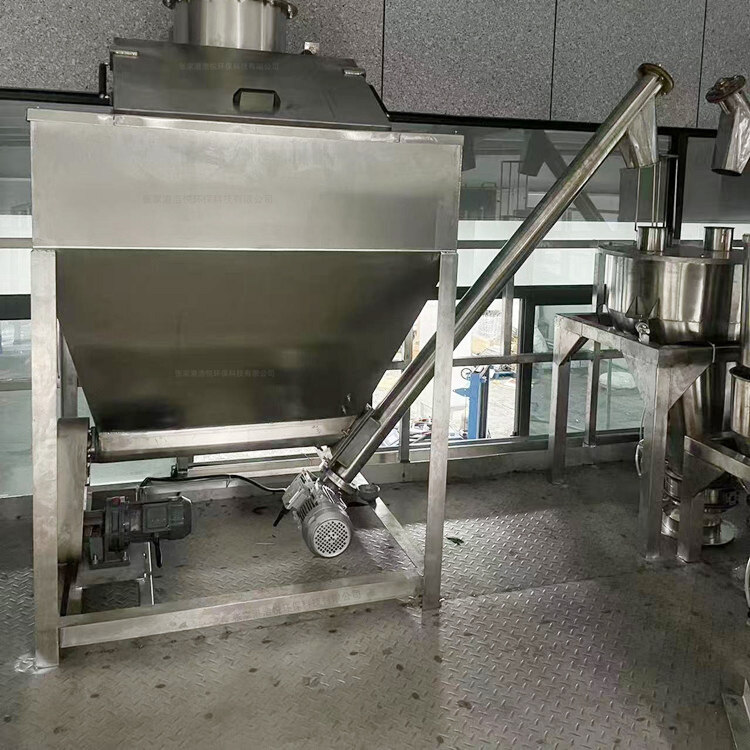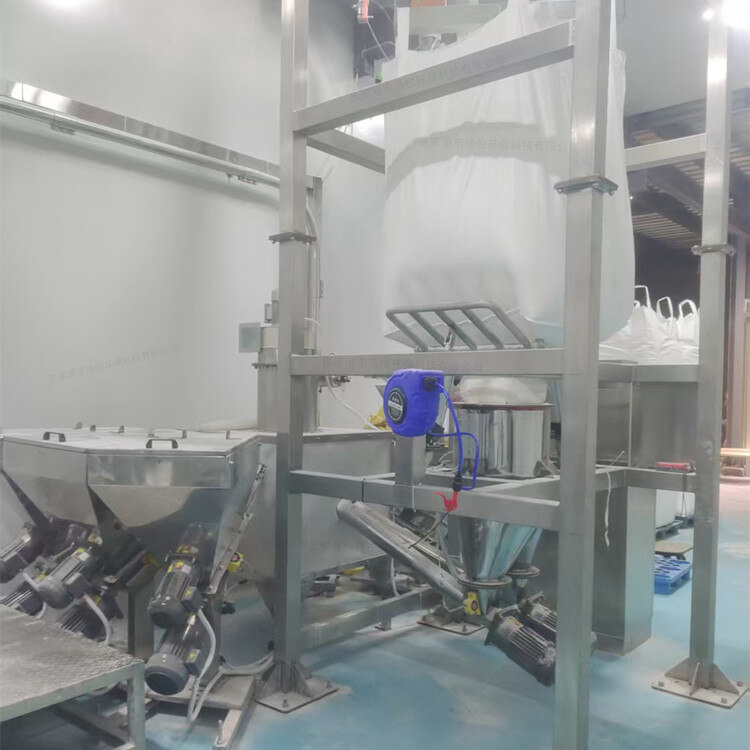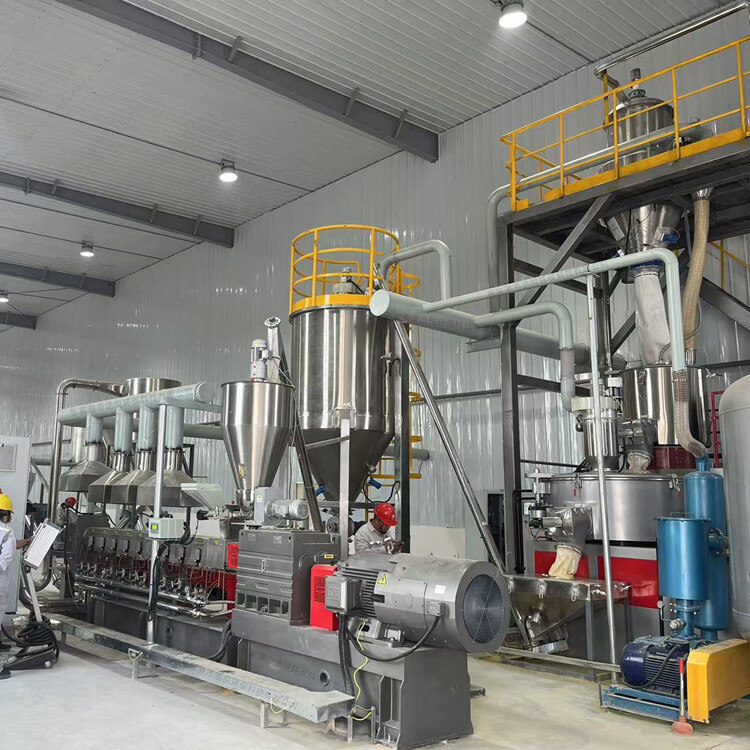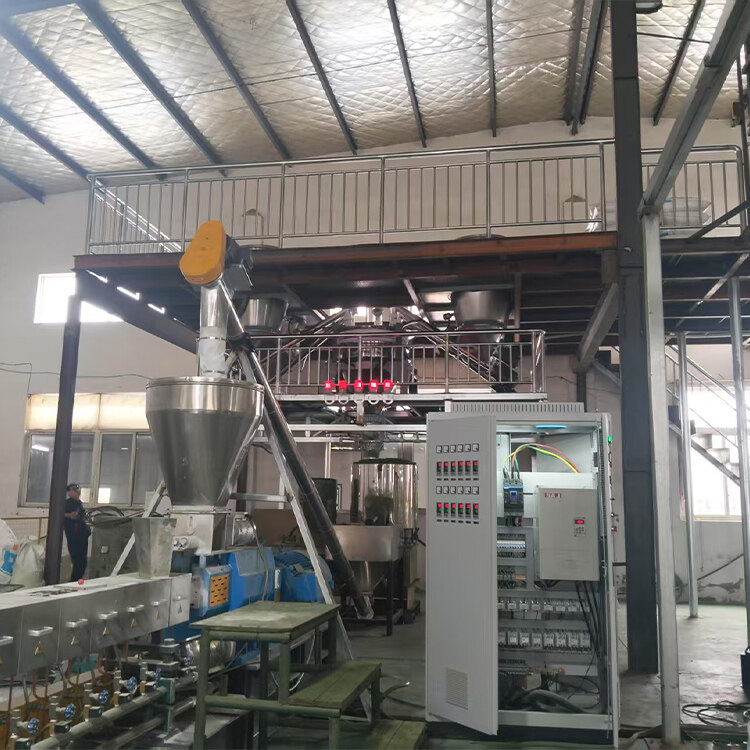- Introduction to automatic batching machine and fully automatic batching machine equipment
- The powder metering system tells you about the introduction of the mixing and drying machine
- 1000kg vacuum feeding machine
- Fully automatic small material batching system
- Research on Innovation of Automatic Weighing Machine Technology
- Design and operation of automatic batching system using PLC, industrial computer and frequency converter
High precision batching machine for modified plastic granulation production line
- Category:Batching Plant
- Hits:113次
- Release Date:2025-06-30
- Share:
- Inquiry
- Details
In the production of modified plastic pellets, the improvement of product performance depends on the precise ratio of multiple raw materials. As a key equipment in the modified plastic granulation production line, the high-precision batching machine ensures the stable compliance of mechanical properties, flame retardancy, weather resistance and other indicators of modified plastics by precisely controlling the ratio of resin, additives, fillers and other materials. The core value of the high-precision batching machine in the modified plastic granulation production line will be analyzed in depth from the aspects of equipment composition, working principle, technological advantages, application scenarios, and development trends.
1、 Equipment composition and functional modules
The high-precision batching machine of the modified plastic granulation production line consists of five core modules, which work together to achieve precise batching.
(1) Material storage unit
For the various raw materials required for the production of modified plastics, the storage unit adopts a graded storage design. The main raw materials (such as polypropylene, polyethylene and other resins) are stored in large capacity sealed silos, equipped with level sensors for real-time monitoring of inventory, and equipped with dust removal devices to prevent dust accumulation; Functional additives (such as flame retardants and antioxidants) and fillers (such as calcium carbonate and talcum powder) are stored in small sealed material tanks, and some humidity sensitive material storage tanks also have built-in dehumidification systems. Each material storage container is independently partitioned and connected to the measuring unit through pipelines to avoid cross contamination.
(2) Measurement unit
The measuring unit is the core of achieving high-precision batching. The main raw materials are usually measured using a weight loss scale, which achieves a measurement accuracy of ± 0.2% by monitoring the weight changes of the silo in real time and controlling the speed of the screw feeder; For trace additives, high-precision micro screw scales or vibrating disc feeding systems are used, combined with electronic scales for dynamic weighing compensation, and the measurement error can be controlled within ± 0.05%. Different measuring devices are optimized based on material characteristics such as fluidity and density to ensure accurate weighing of various raw materials.
(3) Conveyor unit
The conveying unit selects differentiated conveying methods based on material characteristics. The main raw materials are quickly and stably transported to the mixing stage through screw conveyors or pneumatic conveying pipelines; Small particle materials such as additives are transported using vacuum feeders or micro screws to avoid material residue and dust during transportation. All conveying pipelines are made of food grade stainless steel material, with smooth inner walls and easy disassembly and cleaning, meeting the hygiene requirements of modified plastic production.
(4) Control system
The control system is based on PLC (Programmable Logic Controller) or industrial computer as the core, combined with customized ingredient management software. The operator inputs the modified plastic formula on the human-computer interaction interface, and the system automatically analyzes the proportion of each material and controls the measuring unit and conveying unit to perform the batching task in sequence. The system has real-time data collection function, which can monitor parameters such as weight, time, and feeding speed during the measurement process. Once a deviation occurs, the automatic correction program is immediately activated to ensure the accuracy of the ingredients.
(5) Mixed unit
The mixing unit adopts a double screw belt mixer or a planetary mixer, and optimizes the speed and mixing time according to the characteristics of modified plastic raw materials. The equipment is equipped with a variable frequency speed regulation function, which can adjust the mixing intensity according to the viscosity and formula requirements of the material, ensuring that the resin, additives, and fillers are evenly mixed in a short period of time, providing high-quality materials for the subsequent granulation process.
2、 Working principle and process
Firstly, the operator imports the modified plastic formula into the control system, such as setting the ratio parameters of polypropylene resin, decabromodiphenyl ethane flame retardant, antimony trioxide synergist, and calcium carbonate filler when producing flame-retardant polypropylene materials. After receiving the instruction, the control system sequentially starts the feeding devices of each material storage unit to transport the raw materials to the measuring unit. The measuring unit monitors the weight of the material in real-time through sensors and automatically stops feeding when the preset value is reached. Subsequently, the conveying unit transports the measured raw materials to the mixing unit in the set order. The mixing unit disperses the material thoroughly through high-speed stirring, forming a uniform premix, which is finally transported by the conveying device to the granulator for subsequent processes such as melting extrusion and cutting. Throughout the entire process, the control system continuously monitors data from each link to ensure ingredient accuracy and production continuity.
3、 Technical advantages and precision assurance
(1) Dynamic weightlessness measurement technology
For the continuous batching demand of the main raw materials, dynamic weight loss measurement technology is adopted. This technology dynamically adjusts the feeding speed by calculating the real-time weight change rate of the silo and combining it with the conveying efficiency of the screw feeder, effectively eliminating measurement errors caused by factors such as changes in material density and screw wear. It is particularly suitable for stable conveying of resin raw materials in modified plastic production.
(2) Closed-loop control of trace materials
For trace materials such as additives, a closed-loop control system of "weighing feedback adjustment" is adopted. The electronic balance monitors the weight of materials in real-time and feeds the data back to the control system. The system automatically adjusts the speed or vibration frequency of the feeder based on the deviation value, achieving precise addition of trace materials and ensuring stable functional indicators of modified plastics.
(3) Error prevention and self calibration function
The equipment has an automatic calibration function and regularly uses standard weights to calibrate the measuring equipment; At the same time, anti dust and anti adhesion measures are adopted in the structural design, such as spraying PTFE coating on the inner wall of the silo to reduce material adhesion; The conveying pipeline is equipped with a blowing device to prevent material residue and ensure the accuracy of batching from both hardware and software perspectives.
4、 Application scenarios and value realization
High precision batching machines are widely used in industries such as automotive, electronics, and home appliances in modified plastic granulation production lines. In the automotive industry, modified plastics used in the production of automotive interior parts, bumpers, and other components can enhance the strength, flame retardancy, and aesthetics of materials by accurately proportioning reinforcing agents, flame retardants, and coloring agents; In the field of electronic appliances, precise blending of modified plastics for the production of charger casings and TV backboards can meet special performance requirements such as flame retardancy and anti-static. According to industry data, the use of high-precision batching machines can increase the performance qualification rate of modified plastic products by 15% -20%, reduce raw material waste by more than 10%, and significantly improve the production efficiency and market competitiveness of enterprises.
5、 Development Trends
In the future, high-precision batching machines for modified plastic granulation production lines will develop towards intelligence, integration, and green direction. In terms of intelligence, artificial intelligence algorithms are introduced to automatically optimize ingredient parameters through learning from historical production data; In terms of integration, it deeply integrates with MES (Manufacturing Execution System) and ERP (Enterprise Resource Planning) systems on the production line to achieve collaborative management of production planning, material inventory, and ingredient operations; Greening is reflected in the reduction of equipment energy consumption, dust emissions, and the use of recyclable materials in design to adapt to the industry trend of sustainable development.


